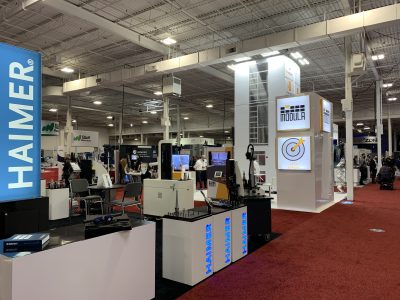
The very future of manufacturing hinges on automation
By Don Horne
Economy Industry Manufacturing Canada CMTS COVID-19 Economy government jobs manufacturer manufacturing TechnologyA large segment of Canada’s manufacturing workforce will be leaving for good by the end of the decade, and new, younger hires aren’t going to replace them.

Photo: Mario Cywinski.
If there is any home of maintaining productivity levels, companies will have to embrace automation and advanced technologies on a scale never before seen, says Jayson Myers, CEO of Next Generation Manufacturing Canada.
“Twenty-five per cent of Canada’s manufacturing workforce will be retiring by 2030. The youngest cohort represent about five per cent of the total manufacturing workforce,” says Myers. “In order to just stay even, we need to increase labour productivity by about 25 per cent – and this is before the company starts growing.”
Myers spoke virtually at the Canadian Manufacturing Technology Show (CMTS) on Oct. 5, on the topic “Manufacturing Transformation: Opportunity or Threat?” And while he saw Canadian manufacturers in a very good position to grow – even outperforming their American counterparts – he cautioned that there needs to be an increased adoption of automation to compete in the global marketplace.
And the departure of an aging workforce into retirement is driving this.
“That is simply demographics, and there is no way companies can do that (maintain and grow productivity) without focusing on automation and advanced technologies, improving process excellence.”
As we are attracting young people into manufacturing, we need to ensure they have the technological and digital skills necessary to succeed, he points out. And that falls on management to make the right decisions.
“Companies that may not know or understand where to apply technology in their process, the total business requirements to deploy those technologies successfully – and don’t have the skills requirements in place to develop and deliver those – they are strategic challenges to develop a highly qualified workforce,” says Myers “If we are going to work as a country to strengthen advanced manufacturing, it is going to be leadership and management that are crucial. Advanced technology are tools. It is the leadership that will make the difference.”
Understanding what this young, new workforce want is crucial as well, he points out, and that translates into making their companies ecologically and socially responsible – showing and doing the things that make a difference in creating a better planet.
“PPE (Personal Protective Equipment) is a vital component that is attracting young people into advanced manufacturing. They want to do their part to help the world, battling COVID and any future virus or health threat,” he says. “Electric vehicles, clean water… all these play a role in attracting young people into the manufacturing sector.”
Disruption in the market
Myers also spoke on supply chains and how the pandemic revealed weaknesses through disruption – and how companies can prepare for future disruptions.
“COVID is only one aspect of how the business of manufacturing is being disrupted. Even greater transformations will hit the industry over the next five to 10 years,” he predicted. “Manufacturers need a plan now in order to turn challenges into business opportunities. Advanced technologies will play a role, but success will depend on how rather than whether they are used to achieve desired business objectives.”
Supply chains are morphing into interconnected, reconfigurable value networks, he added, and the lines between manufacturing, services and technology businesses are becoming blurred.
“Our supply chains are only as strong as the weakest link. I challenge companies to trace the supply chain, as there is real pressure to ensure the reliability and quality of product coming through the supply chains.
“Products are evolving into platforms for new service-based business models, with collaboration and open innovation becoming more important in order to reduce risk and develop unique solutions by integrating new technologies,” he says. “The ability to work collaboratively to develop unique solutions is what will give Canadian manufacturers an edge.”
He cautioned manufacturers not to judge themselves by comparing volume output when looking south of the border.
“If we are measuring volume – the U.S. will lead. If you look at the financial performance, Canadian manufacturers are more profitable – gross margin, before and after tax – the profit margins are higher in Canada,” he says. “How can you be more profitable and less productive? Maybe we’re looking at the wrong things. How do you generate the high-value services? That is the strength of Canadian companies, and where we need to be in the future.”
Article provided by IPPT magazine:
https://www.ippt.ca/the-very-future-of-manufacturing-hinges-on-automation/
